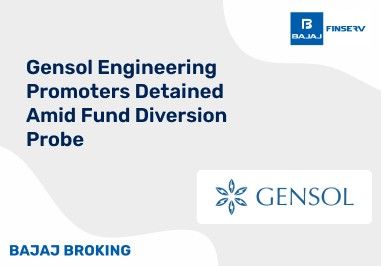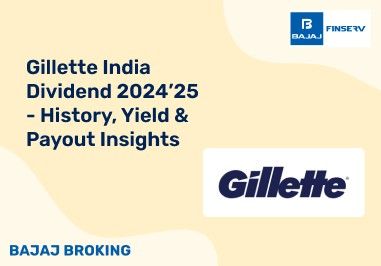The continuously evolving business landscape has proven how things change so fast and your success very much depends on your ability to adapt. Among other things, this adaptability also includes the inclusion of modern business strategies that serve as guiding tools for business management and much more. Here comes business forecasting, a strategic tool to assist businesses on the right track.
Business forecasting, as the name suggests, is a procedure where you make predictive guesses on a business's future. The same is done using data and analytics on customer preferences, behaviour, market trends, and conditions. Business forecasting aims to identify prospects and risks related to a business, its products, services, or more. It simply involves making a rough but informed estimate of upcoming events and situations. This informed approach comes in handy for businesses to be prepared accordingly.
Understanding Business Forecasting
Business forecasting is primarily used by businesses to develop suitable business tactics or strategies. Using the data of previous years, companies try to find a pattern. This helps businesses make a broad plan on a variety of factors. This includes resource allocation, financial planning, risk identification, developing suitable risk mitigation strategies, and much more.
These business forecasting methods have also evolved, thanks to the evolution of AI. Forecasting is made using several methods. However, all these methods can be broadly classified into two categories: quantitative approach and qualitative approach.
Types of Business Forecasting
Here are the two popular types of business forecasting.
The quantitative Model, as the name suggests, is an approach that puts heavy reliance on data and statistics. Factors like human expertise, suggestions, and more are avoided. It is considered ideal for industries with a good backing of historical data and market trends.
The Quantitative model is considered suitable for long-term predictions using variables like GDP, sales, etc. Some of the popular approaches used in quantitative models are the indicator approach, time series methods, econometric modelling, and more.
Popular for short-term guesses, the qualitative model somewhat is restricted to forecasts with limited scope. These forecasts can be expert predictions based on the market and related movements. This approach can prove to be useful in predicting the short-term progress of a company, a product, and more.
The qualitative model includes the Delphi method and market research.
Criticisms of Forecasting
While forecasting carefully can help you make informed guesses, excessive reliance on the same can restrict your actions. Presenting a notion that the long-term and short-term growth and other factors are already determined may be demotivating for a few companies as well. Further, one of the common problems with business forecasting is that it does not include all the elements of a business, which might deviate from the forecast or bring inaccurate results.
Undoubtedly, business forecasting can also be useful for businesses in financial planning, making strategies, and much more. However, there are some common risks with overreliance on forecasting.
The data to be used in forecasting is going to be historical, meaning it's old. Thus, there is no definite guarantee that the past data to be used is going to align with future conditions.
Predicting all kinds of unexpected situations and market conditions is almost impossible. Thus, making rough assumptions can hamper productivity.
Forecasts are not able to count their impact. Business forecasting reports of any type can limit management’s action with certain predictions
Keeping the criticism aside, business forecasting is going to stay. Infact, business forecasting can help you immensely by allowing you to avoid potential risks, and making careful plans to help your business thrive. It helps you stay competitive and do better according to the market trends.
How to Use Business Forecasting
Business forecasting has both: its pros and risks. But what is the right way to use business forecasting? Here are some effective strategies to use forecasting.
Choosing the right method is crucial. Depending on your forecasting model, you may make long or short-term predictions. However, before you choose the right model, make sure to consider a few factors. This includes factors like the context of the business, including the type of the industry, its competitive arena, availability of data, and the level of accuracy you're expecting.
Once you've assessed the business, try choosing a relevant set of data. Along with relevancy, make sure to check if it is accurate and reliable. Also, see if the past data aligns with present market conditions to make suitable predictions.
Don't be rigid about a certain forecasting approach. Instead, be flexible. Understand that changing events demand a change in approach, too.
Regular forecasting is important. The same helps you to understand whether your model is working out or not, do you need to make adjustments, what are your lacking areas, and much more. Forecasting once and then doing nothing about it can just be restrictive. Instead, regular monitoring and refining your approach can help you calculate more relevant results while also not compromising accuracy.
Based on the forecasting, plan your goals. Make sure the goals are realistic calculated, and time-bounded.
What are the Main Steps of Business Forecasting
Now that you know the basics of forecasting, let's move ahead. Let's try and understand how business forecasts work. Here are some of the steps used in the forecasting method.
Your forecasting has to be objective, meaning you have to choose a specific problem or question that is going to be the target of your forecasting. For example, you may predict the annual sales in the coming year or sales of a specific product till the year-end.
Once you've identified your problem, move ahead and choose a relevant data set. It should be accurate, reliable, and aligned with the present market conditions. Here, you also decide the method of your data collection.
Forecasting is about making informed guesses. Here, you cannot include every data, time horizon, and several other factors. This is why the forecaster makes assumptions which helps cut the time and hassle.
Your next step should be choosing a suitable model. Make sure that the model you are choosing should be suitable considering your dataset, assumptions, and much more.
Once the model is chosen, data is carefully analysed considering the essential factors. After careful consideration and analysis, forecasting is made.
The last step is the final verification. Here, your forecasting analysis is carefully reviewed to make comparisons with what actually happened. After this, problems and lacking areas are identified, and improvements are made.
Is Forecasting a Business Strategy?
Yes, business forecasting is nothing but a business strategy only. Here, data sets and analytics are collected and applied to the current scenario to make informed predictions about a business's future. This comes in handy for companies to see and predict possible outcomes and events. You may this strategy to plan and thrive in this competitive business landscape.
What Do Business Forecasting Models Answer?
Business forecasting can be used to answer a variety of questions for your business. For example, you may use this forecasting model to answer questions if the demand for a specific product is likely to rise or fall, if a specific service is suitable enough to compete in the market, what are the success rates of a specific product or a service, if you're business is likely to grow or not, and whatnot.
Limitations of Business Forecasting
Business forecasting can help companies calculate risks and make careful decisions. However, as mentioned, overreliance can also have negative consequences. And even the analysis made by business forecasting is not a guarantee but just an informed assumption. Here are some of the limitations of business forecasting:
Data accuracy and quality are one of the most important things to be considered when making business forecasting. Choosing the wrong or irrelevant data can cause severe errors or even biases. This ultimately, can hamper the decision making or even lead to poor business planning based on wrong analysis.
Business forecasting uses historical data which is accessible at that time. However, using the same does not give any assurance that the same conditions are going to prevail in the future.
Forecasting is a calculative process. It involves various steps, starting from the collection of data to choosing the right method, making assumptions, final verification, and much more. It takes a lot of time, effort, and expertise to complete the process.
Accessing historical data, using expert’s opinions, and more makes forecasting an expensive process.
It is not possible for business forecasting to consider every small factor and detail. Missing such details can make the assumptions deviate from the current reality. One of such factors is seasonality. Seasonality makes it complex for previous data to predict future events.
Economic and geopolitical events like war, political instability, a natural calamity, can also affect forecasting analysis.
Conclusion
Business forecasting can help businesses in several ways. The analysis can be used to make guesses about a company's future to a certain extent. Based on the same, you can allocate your capital and resources, recruit new staff, make marketing campaigns, and do much more. Without any kind of forecasting, it is natural to feel lost and overwhelmed. However, with business forecasting, you have a calculated guide to help you take the right path that may help your business grow and expand.
Disclaimer: Investments in the securities market are subject to market risk, read all related documents carefully before investing.
This content is for educational purposes only. Securities quoted are exemplary and not recommendatory.
For All Disclaimers Click Here: https://bit.ly/3Tcsfuc













